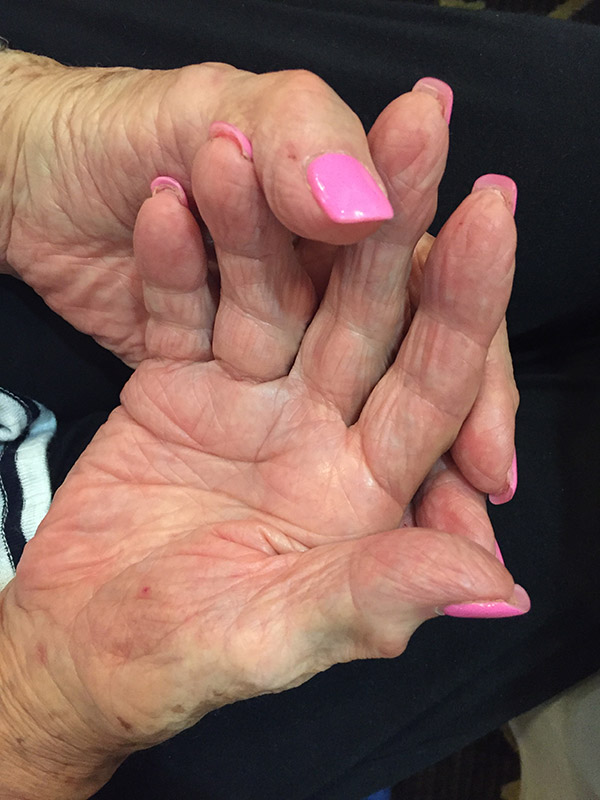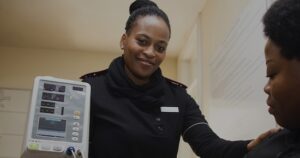September is Healthy Aging Month and National Yoga Month. In this guest blog, Dr. Erin Partridge, ATR-BC, an Experiential Researcher in Residence for Elder Care Alliance, shares how these two topics connect and dispels a few myths about yoga.
Why Yoga?

Most of us know we should move our bodies more. Do a quick scan of offerings from health centers, gyms and community centers and there so many options. So how does one choose? I’ve been practicing yoga for almost 20 years and teaching for six. As someone who works as an art therapist and mental health professional, my yoga practice is part of my self-care; a daily practice allows me to give 100 percent in my work without depleting myself.
When I first started teaching chair yoga classes in Elder Care Alliance communities, I was not sure how it would be received. Adapting classes for participants’ mobility, inviting friends and family to join us and bringing a sense of humor to each class has helped to invite elders and their care partners into the classes. Yoga has some excellent benefits for older adults and for their care partners.
Yoga for Older Adults
Yoga can provide physical and mental benefits. A randomized, controlled trial of a chair yoga class for people with lower-body osteoarthritis found significant benefits in pain reduction and gait (Park, McCaffrey, Newman, Liehr, & Ouslander, 2017). Other studies have identified benefits including balance, mobility and flexibility.
Anecdotally, I’ve seen elders relax, deepen their breathing and become more ‘present’ in the classes I’ve offered in our skilled nursing, assisted living and memory care environments. One woman told me that linking her breath and movement has had an incredible impact on how she moves around in the world—she has been working to practice this principle while doing physical therapy exercises and when she walks from place to place.
Yoga for Care Partners
Yoga can help with some common consequences of providing care—there are yoga classes and movement sequences specifically designed for addressing lower back pain, tension in the neck and shoulders, and other physical issues. On the mental and emotional side of things, yoga can increase the ability to breathe through emotionally challenging situations, assist with stress reduction and possibly increase a sense of connection to self and others.
The two most common things I hear when I invite someone to a yoga class are: “But I’m not flexible!” and “Do I have to stand on my head?” I always promise that while I love turning the world upside down in any of the inversion poses, we won’t be standing on our heads. I encourage people to breathe into anything that feels difficult and move as much or as little as is comfortable for their body. The breathing and starting from a stable, comfortable seat is the most important part.
Healthy and Peaceful Homework for September … and Beyond
I invite you, as you read this, to notice your posture right now.
Adjust your body so that you have your feet resting equally on the floor or the footrests of your wheelchair.
Notice your breathing. Maybe this is the first time you’ve paid attention to your breath today.
On your next inhale, breathe deeply … breathe all the way down to your toes.
As you exhale, clear out all the old air in your lungs.
With your next inhale, shrug your shoulders up to your ears and as you exhale, let your shoulders relax.
Take a few more deep, slow breaths and get as steady and stable as possible. Try to balance your body from right to left and front to back.
Take one more deep breath with your eyes closed and then wiggle your fingers and toes and blink your eyes back open.
I encourage you to come back to this practice anytime you need to take a break or reconnect with yourself.




















